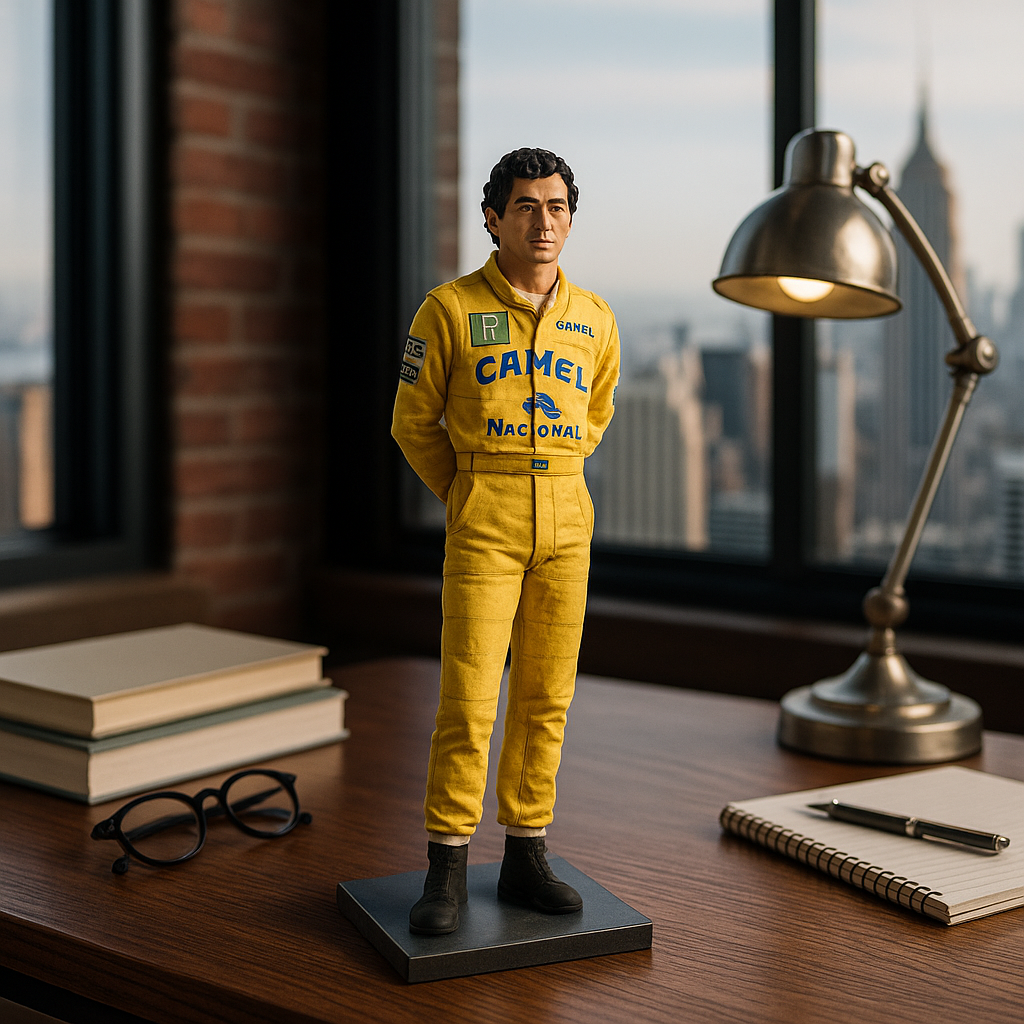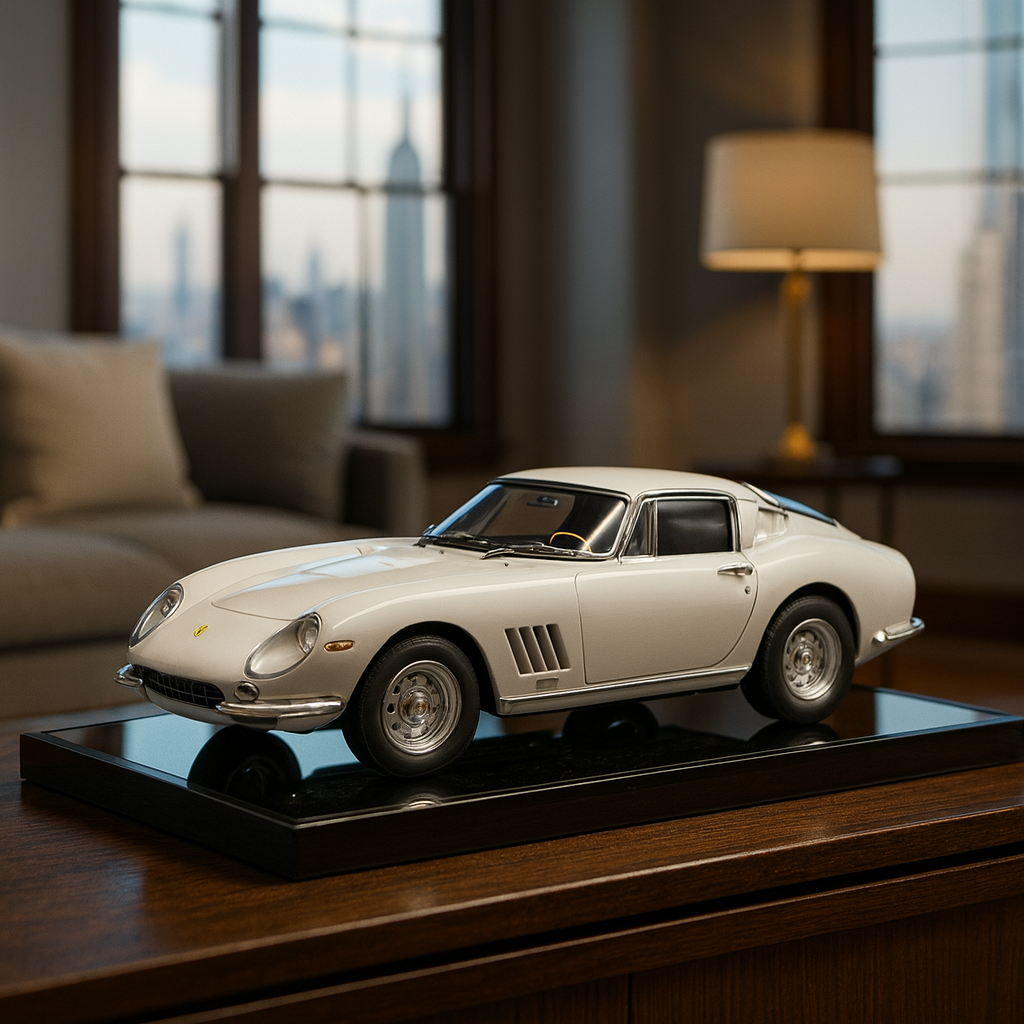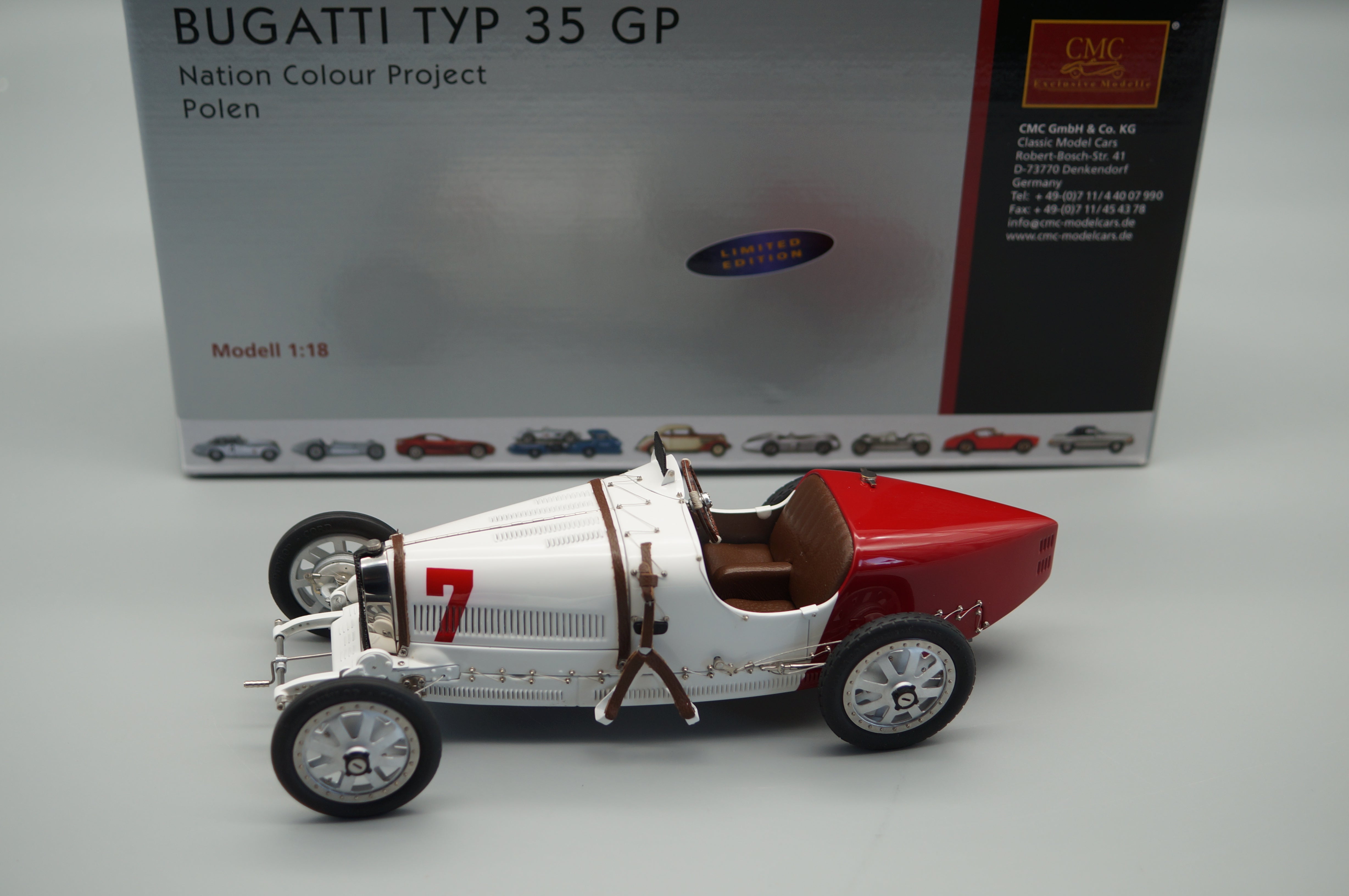
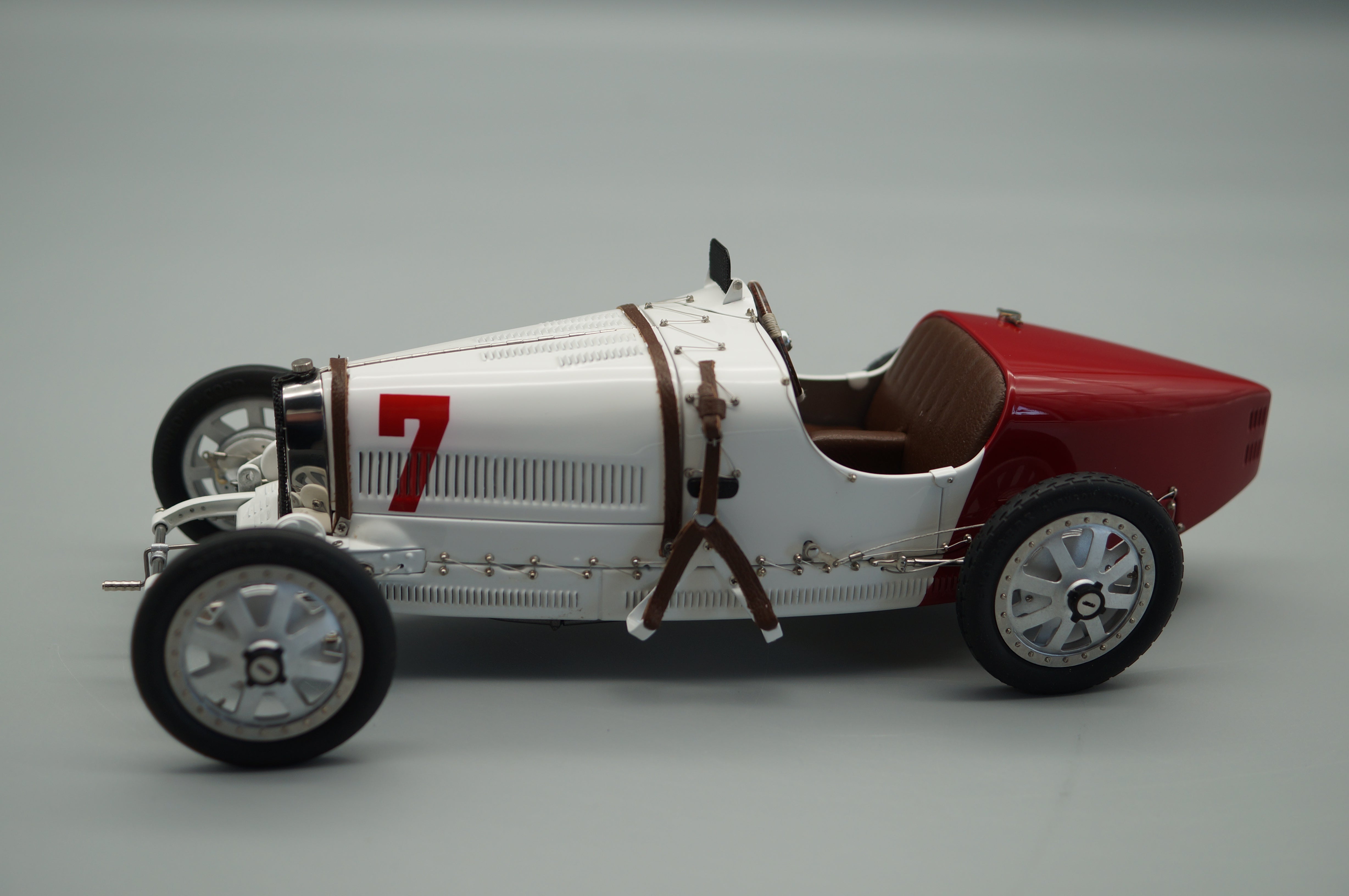
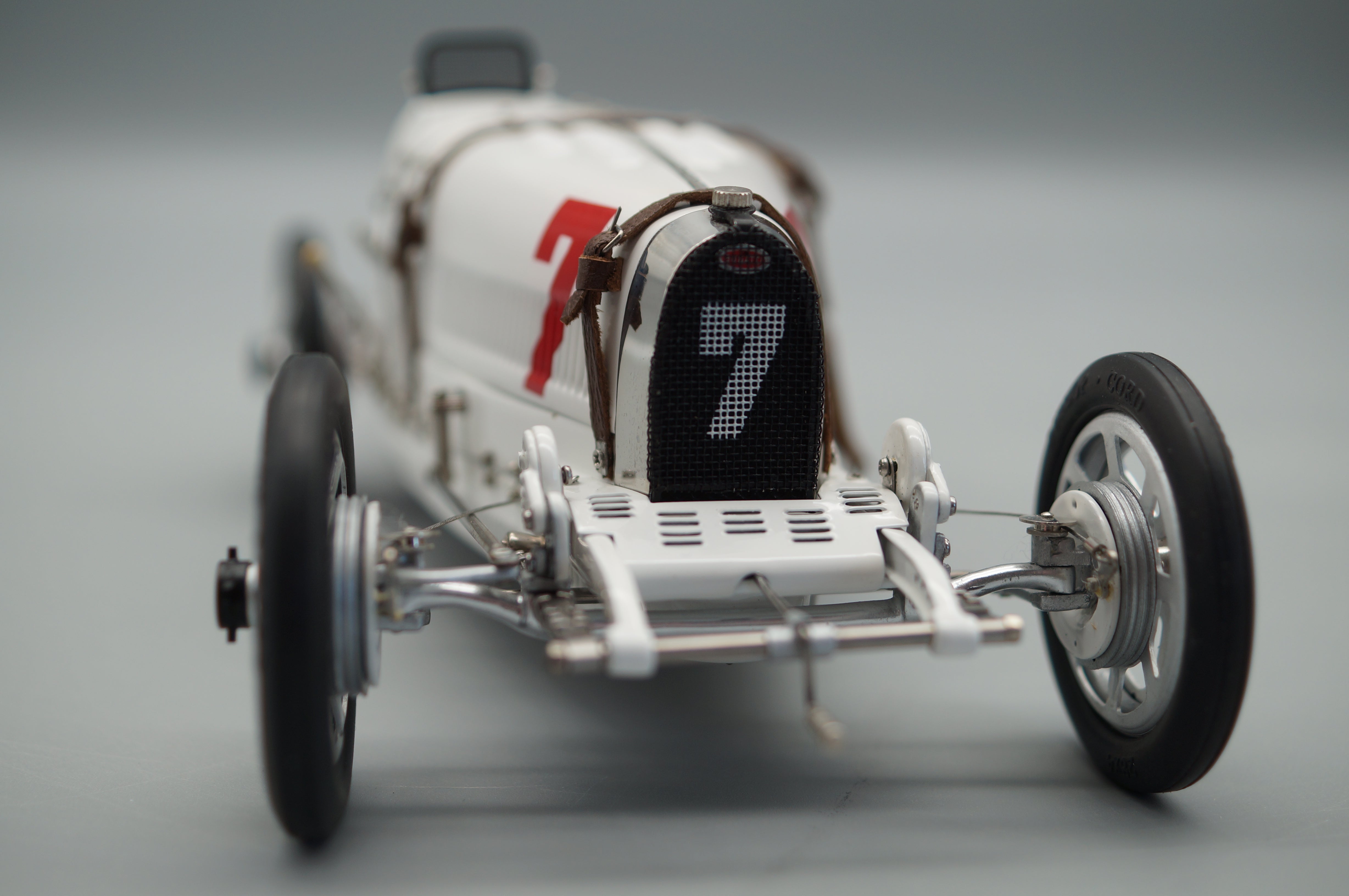

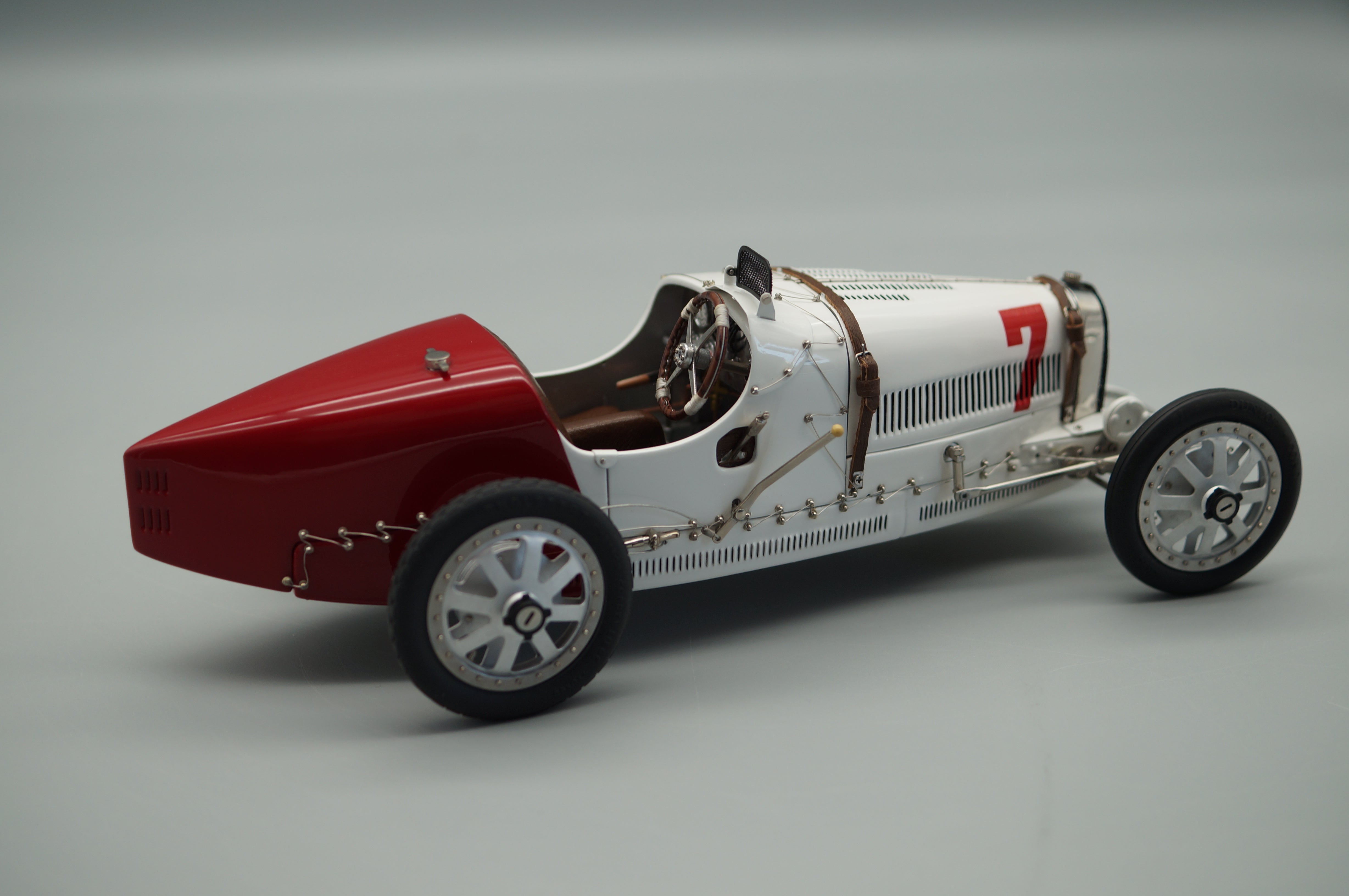
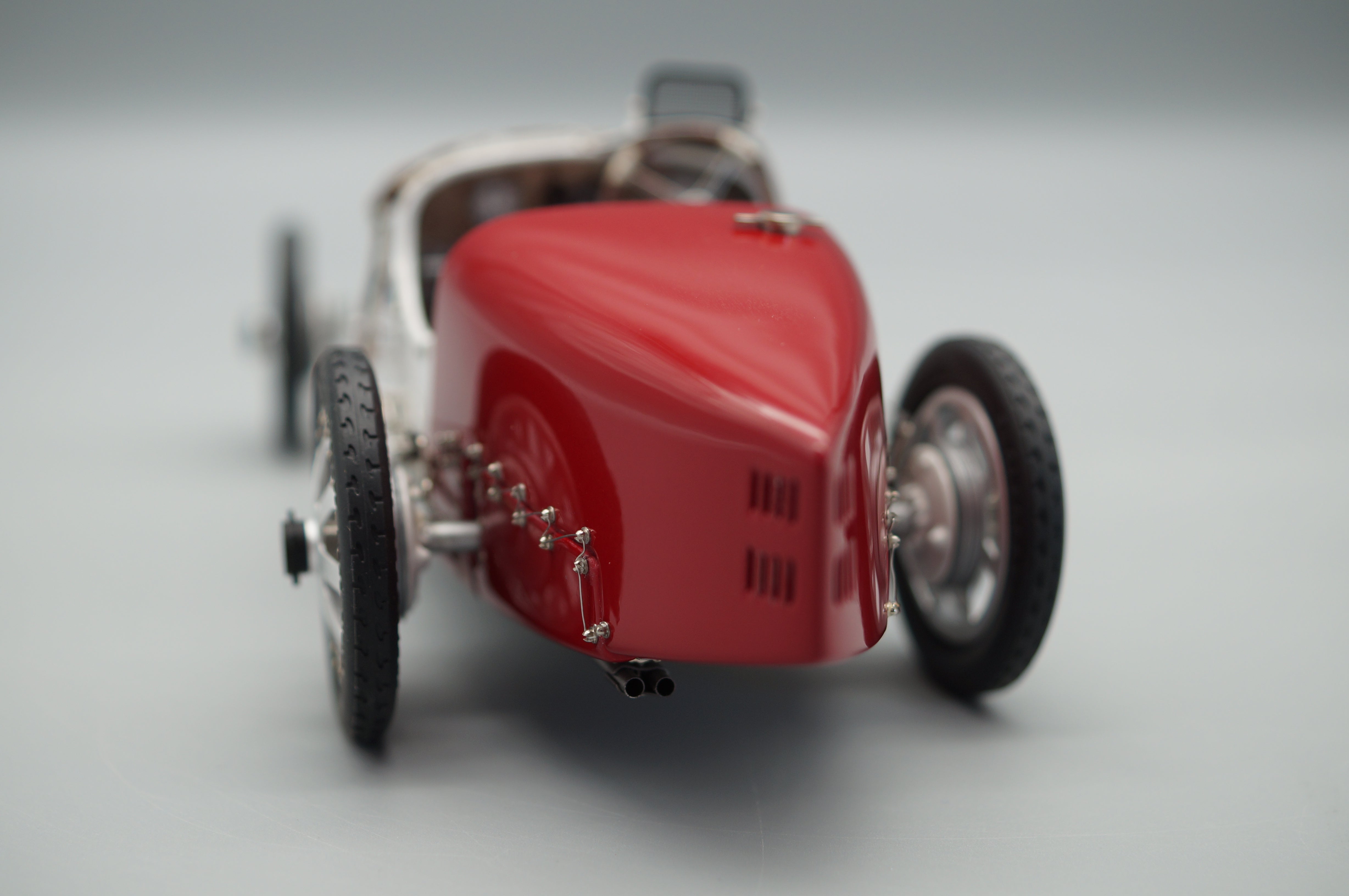
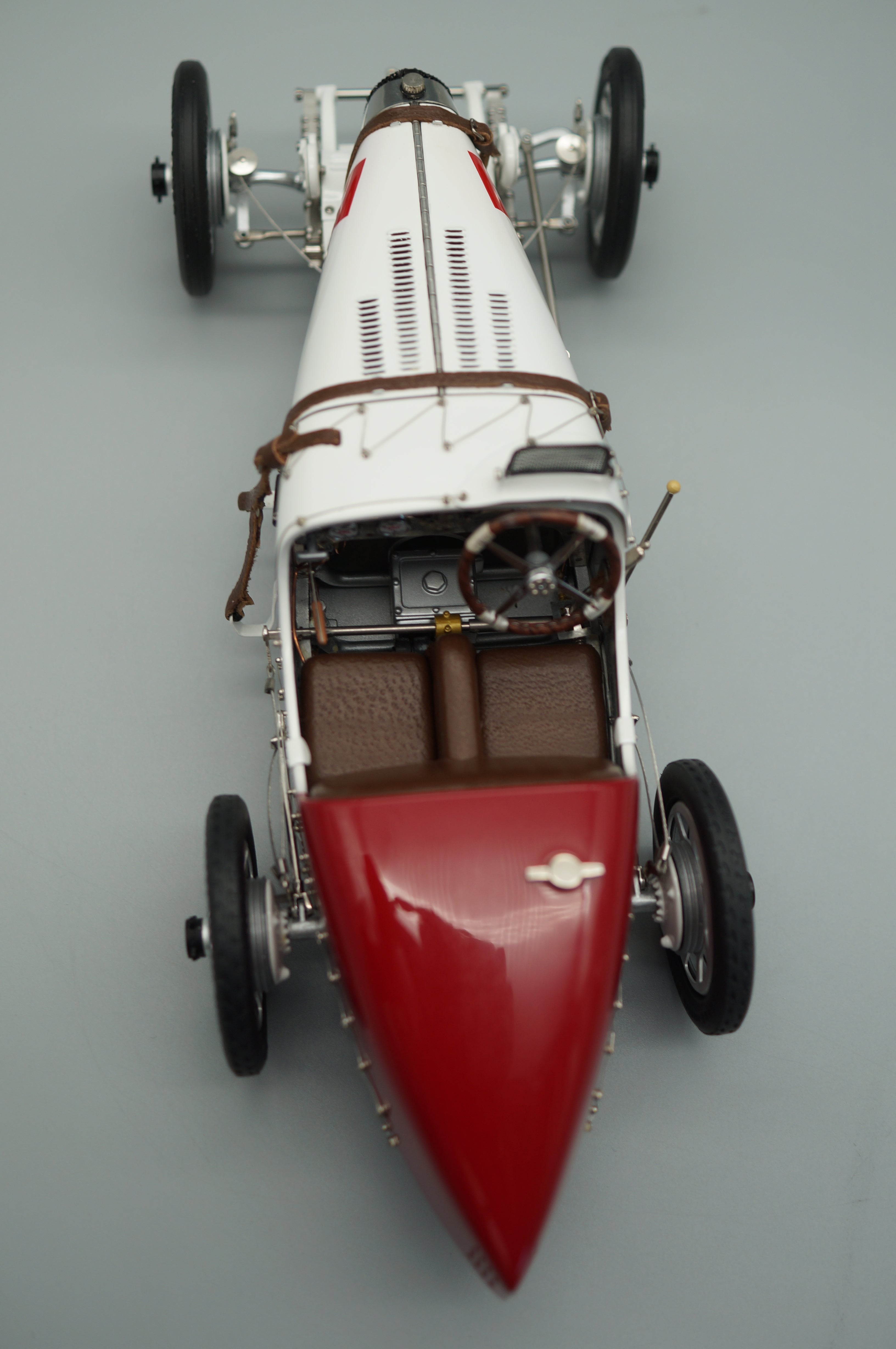

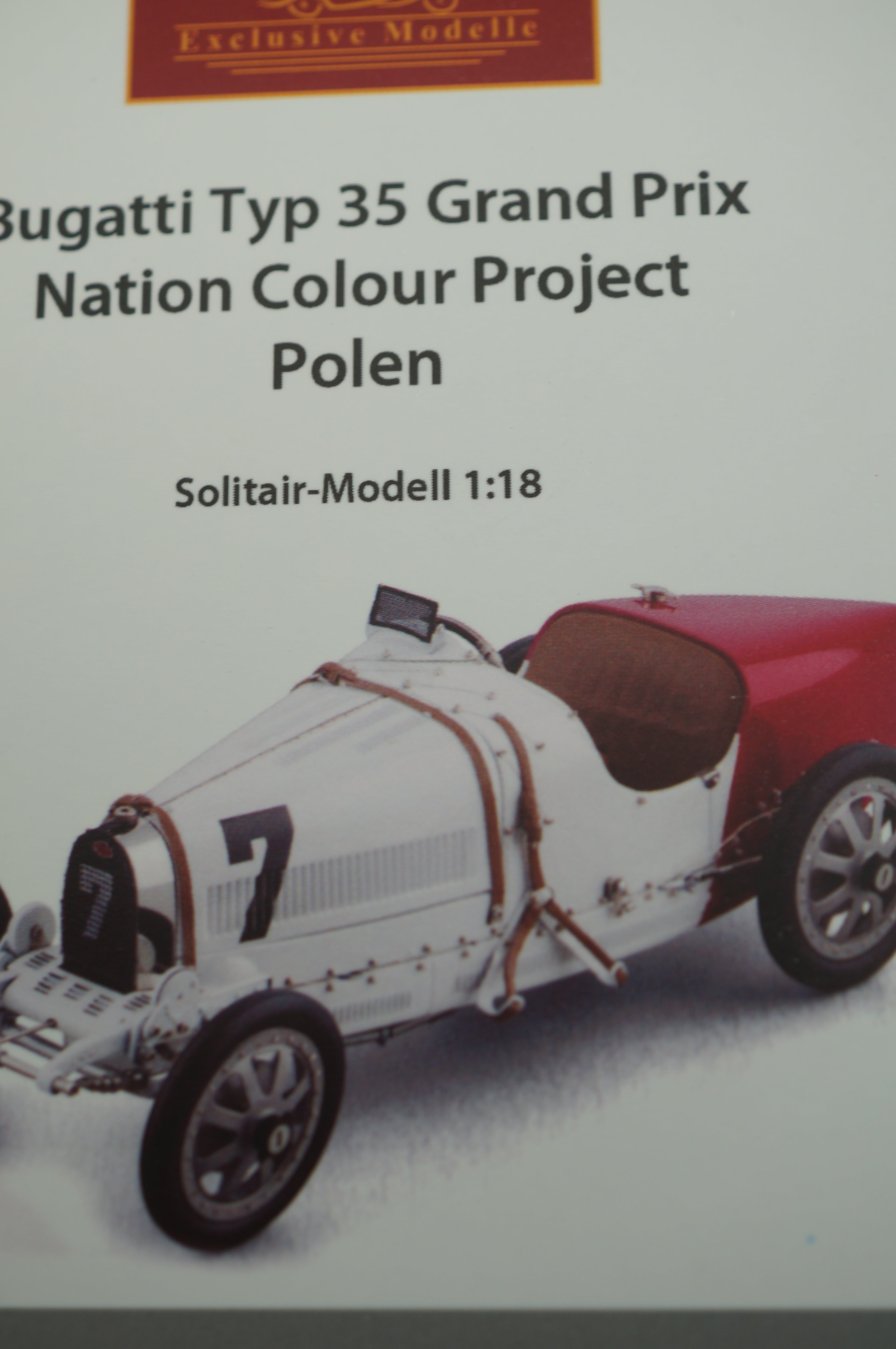
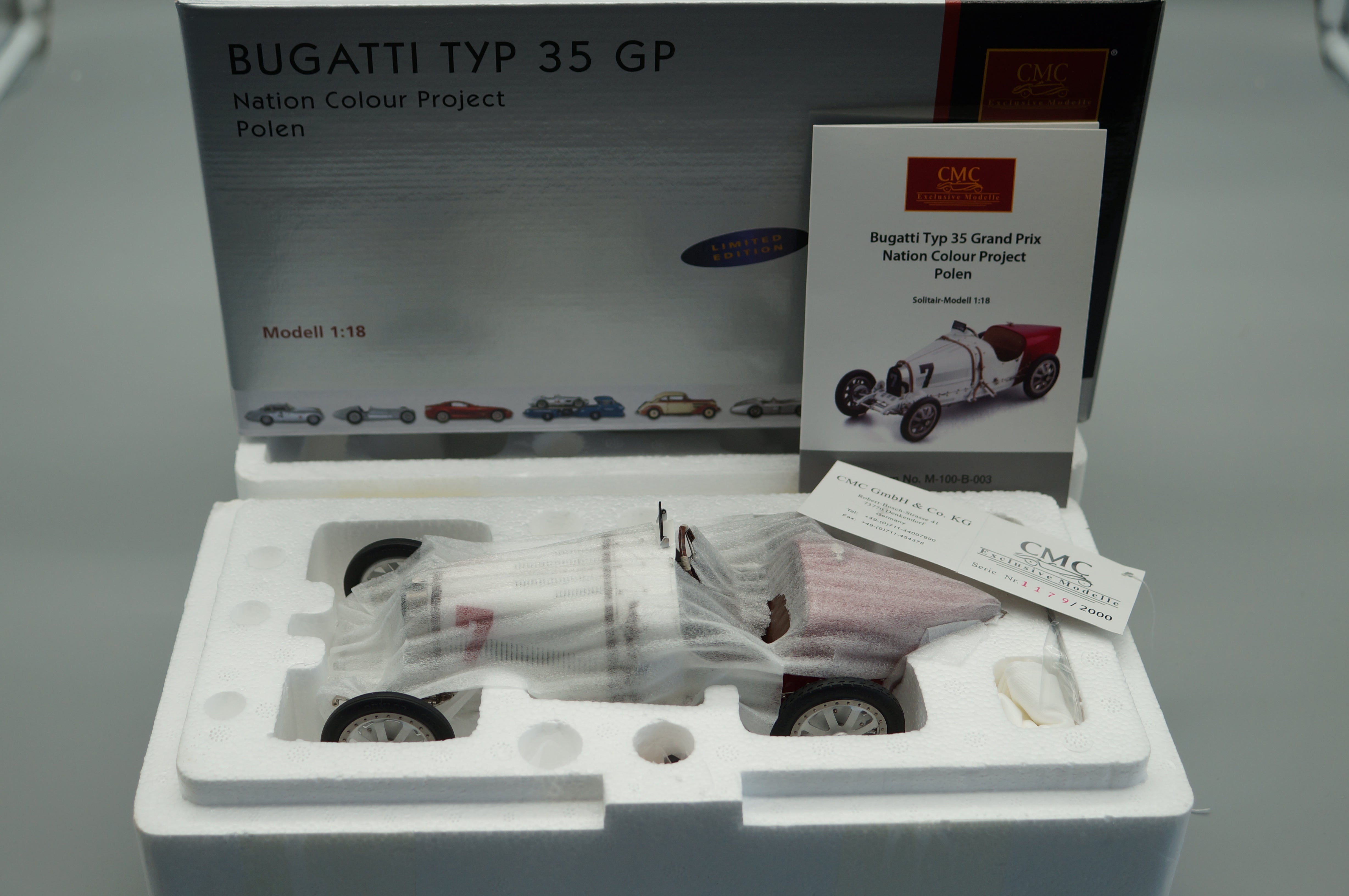
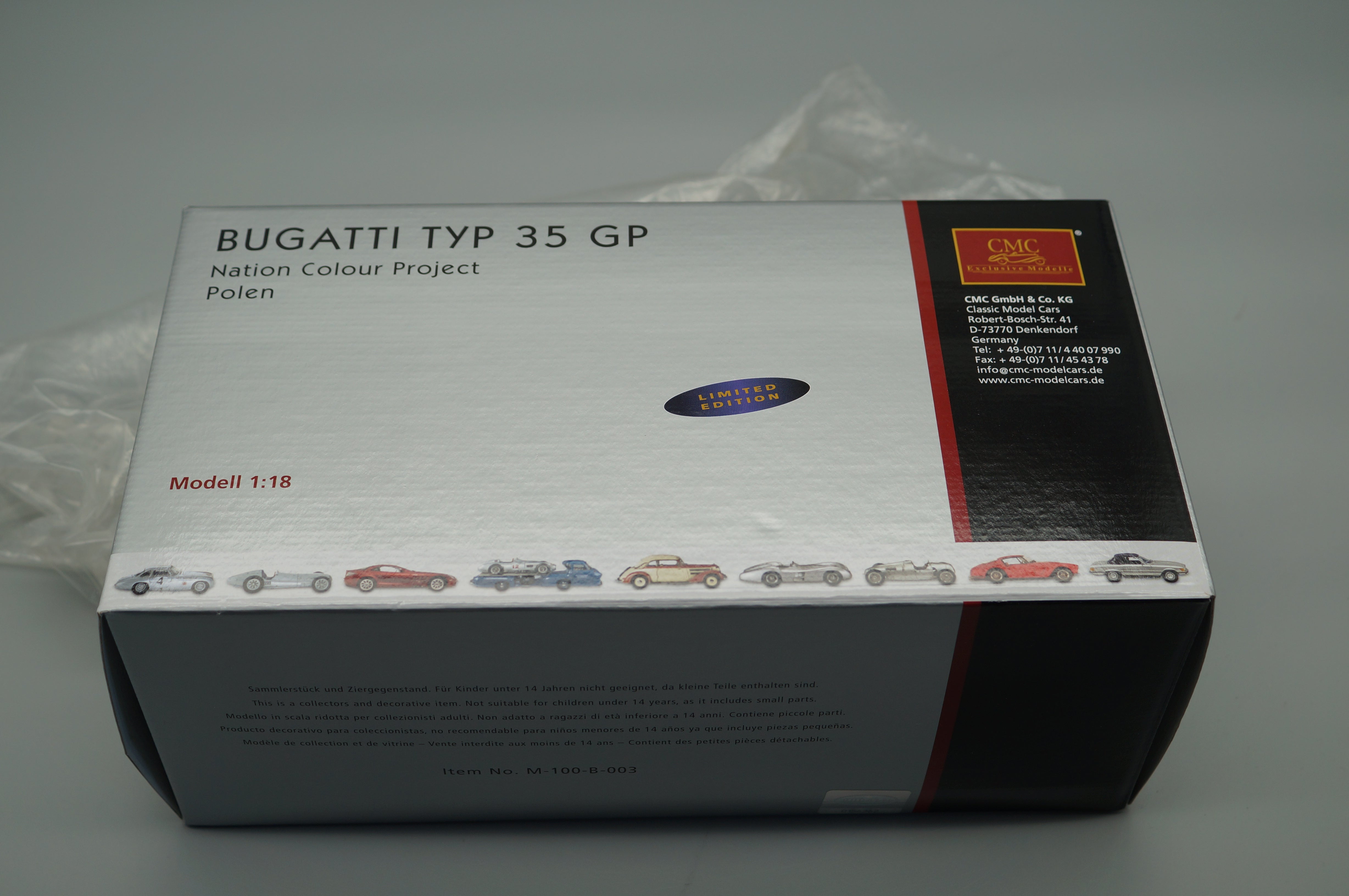
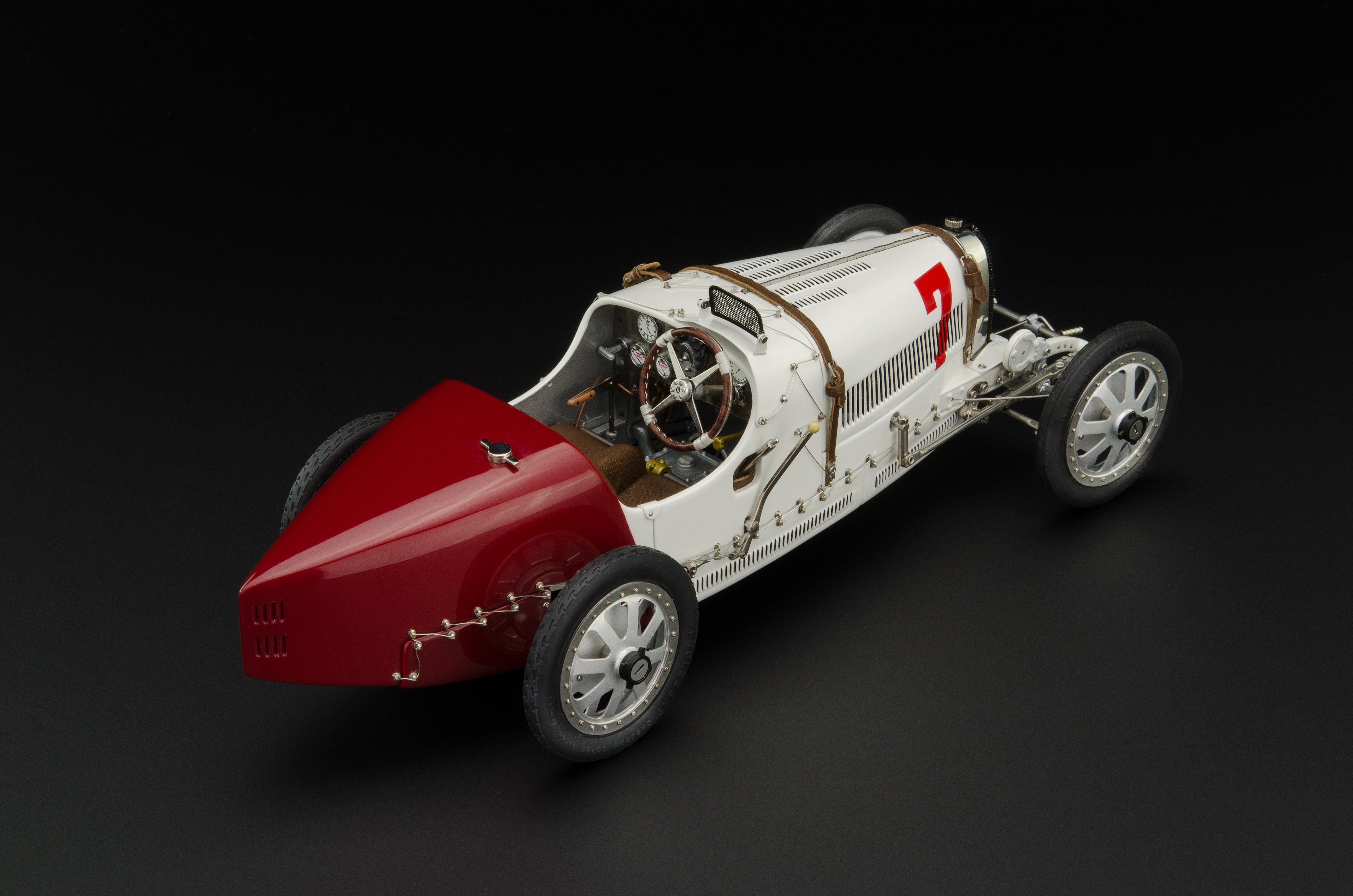
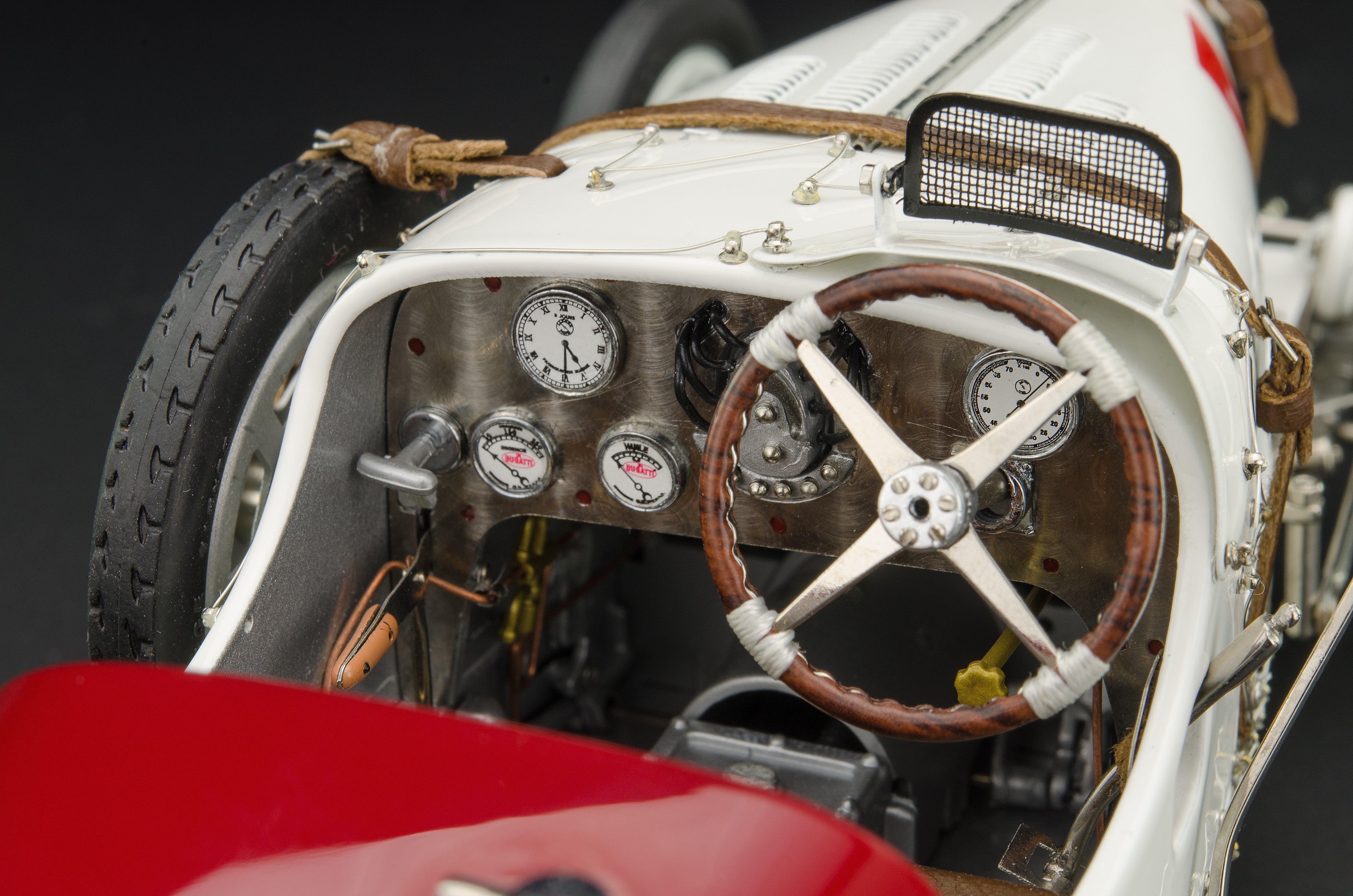
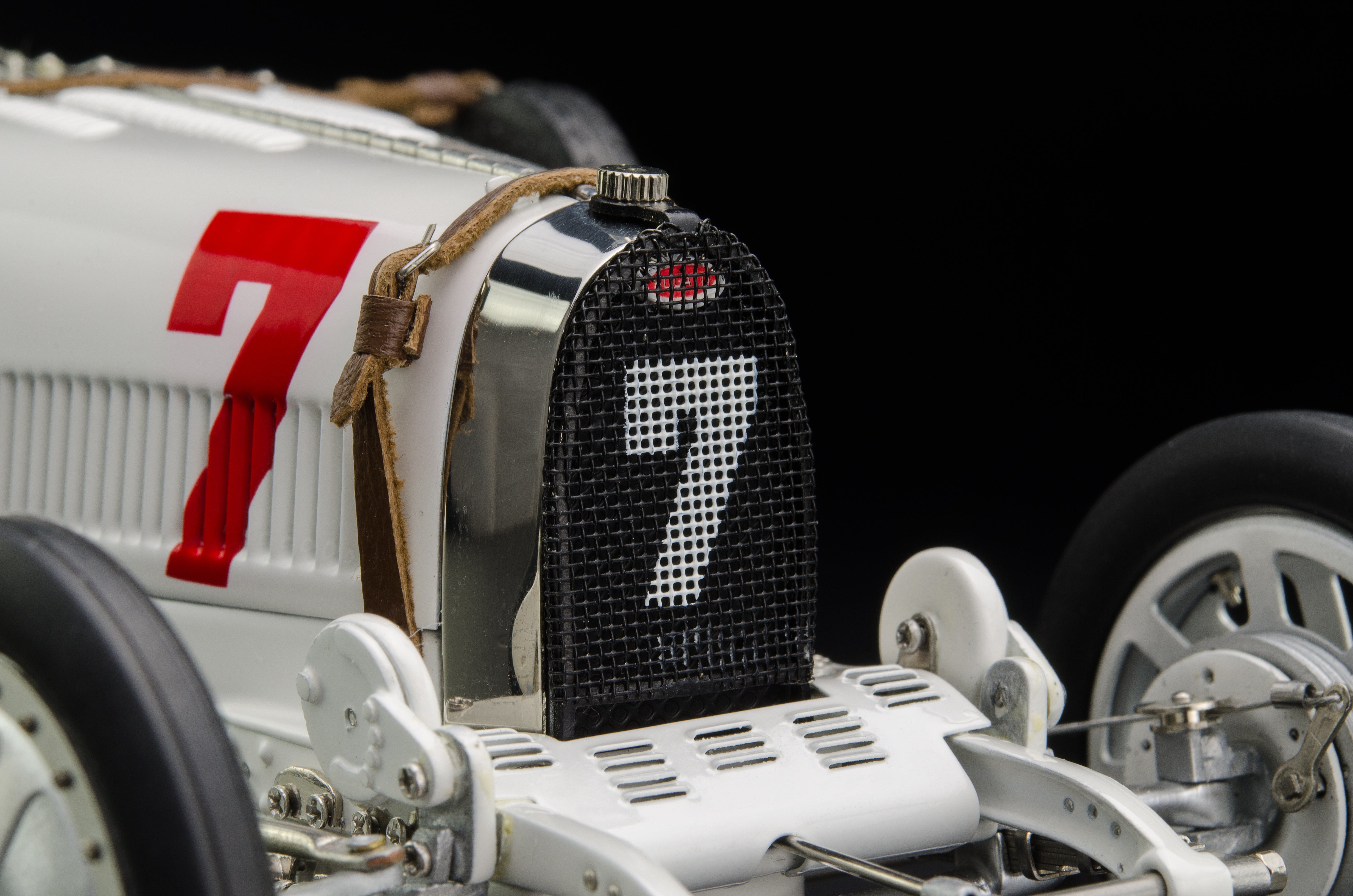
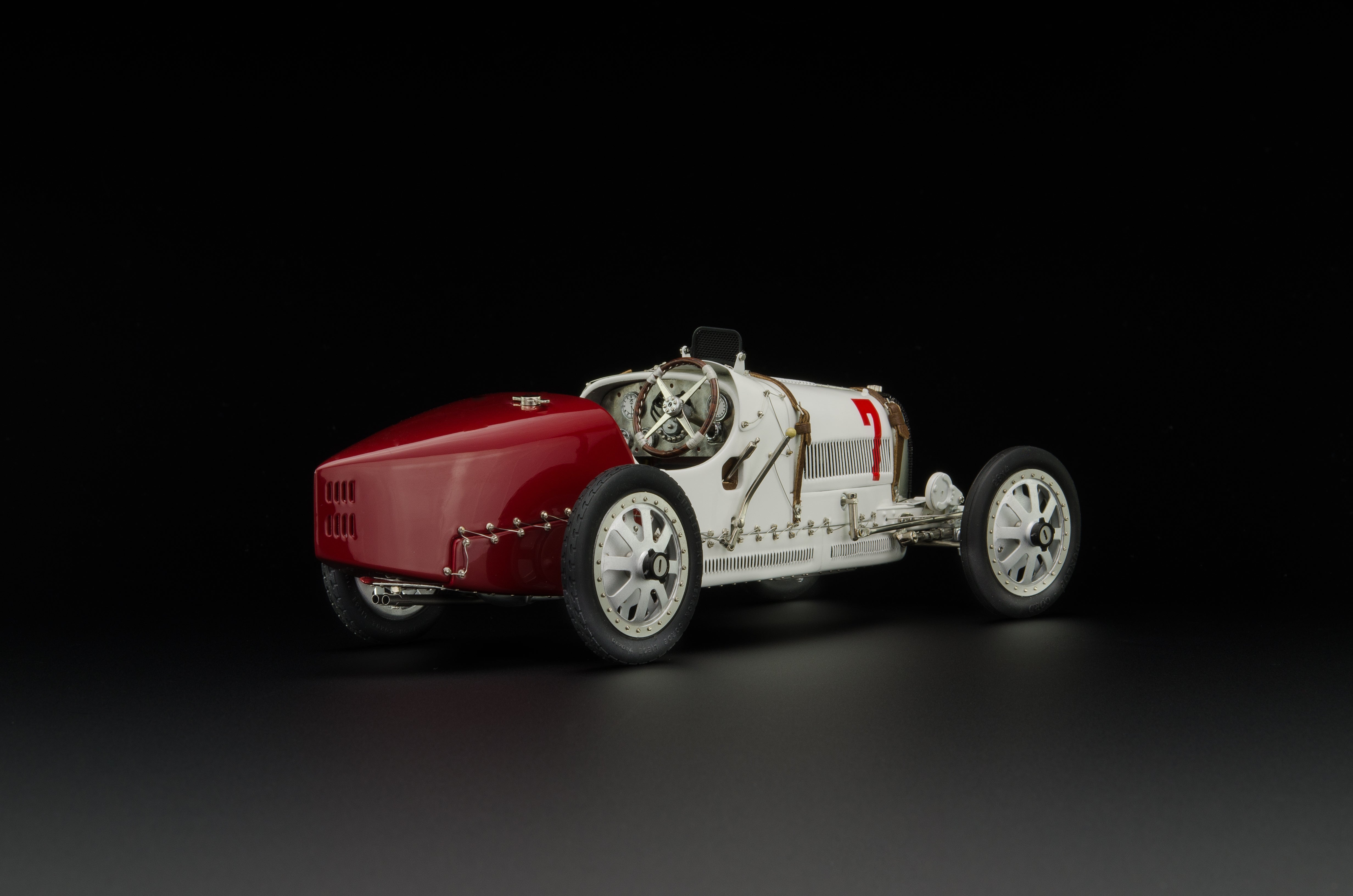
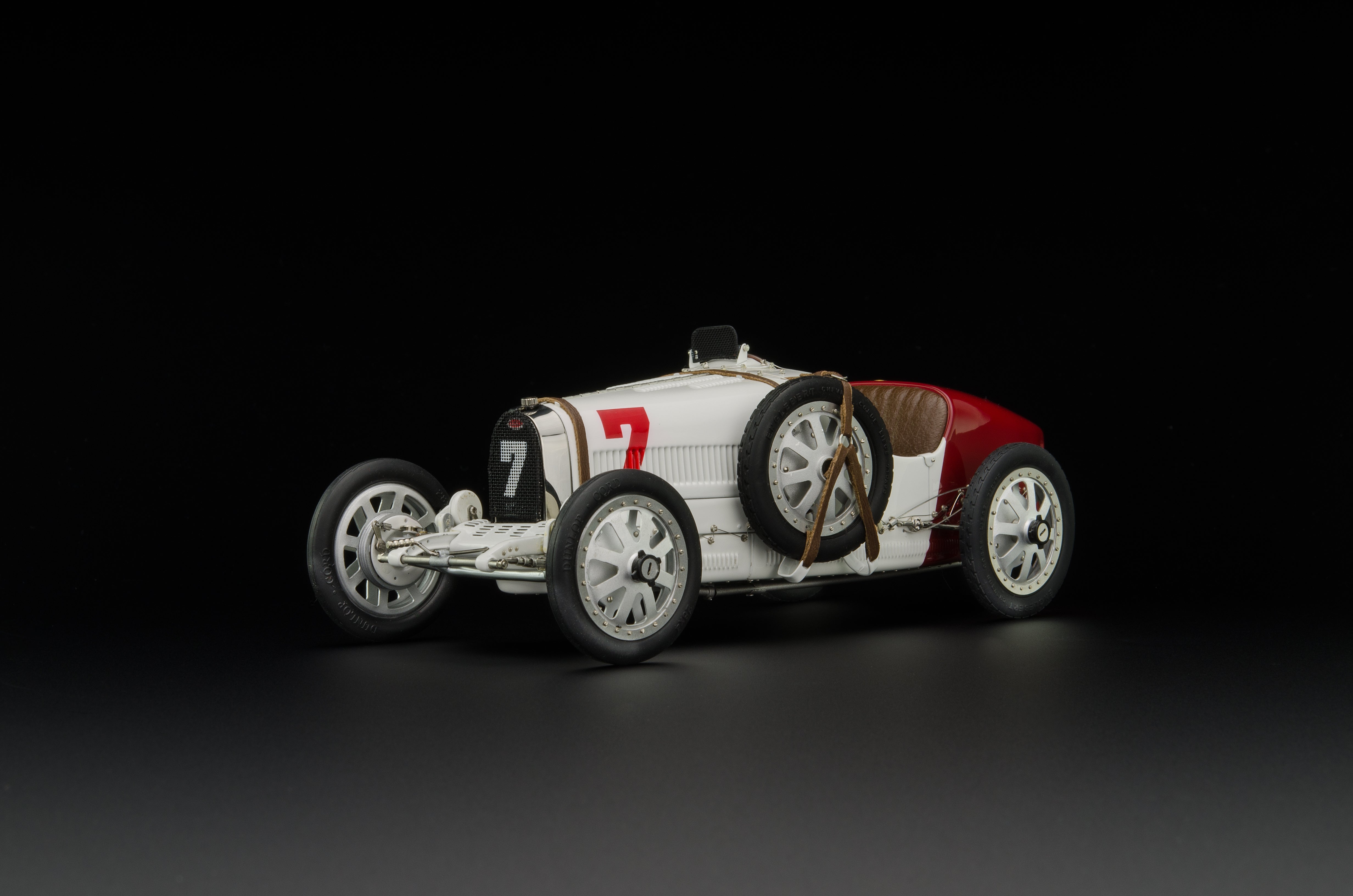
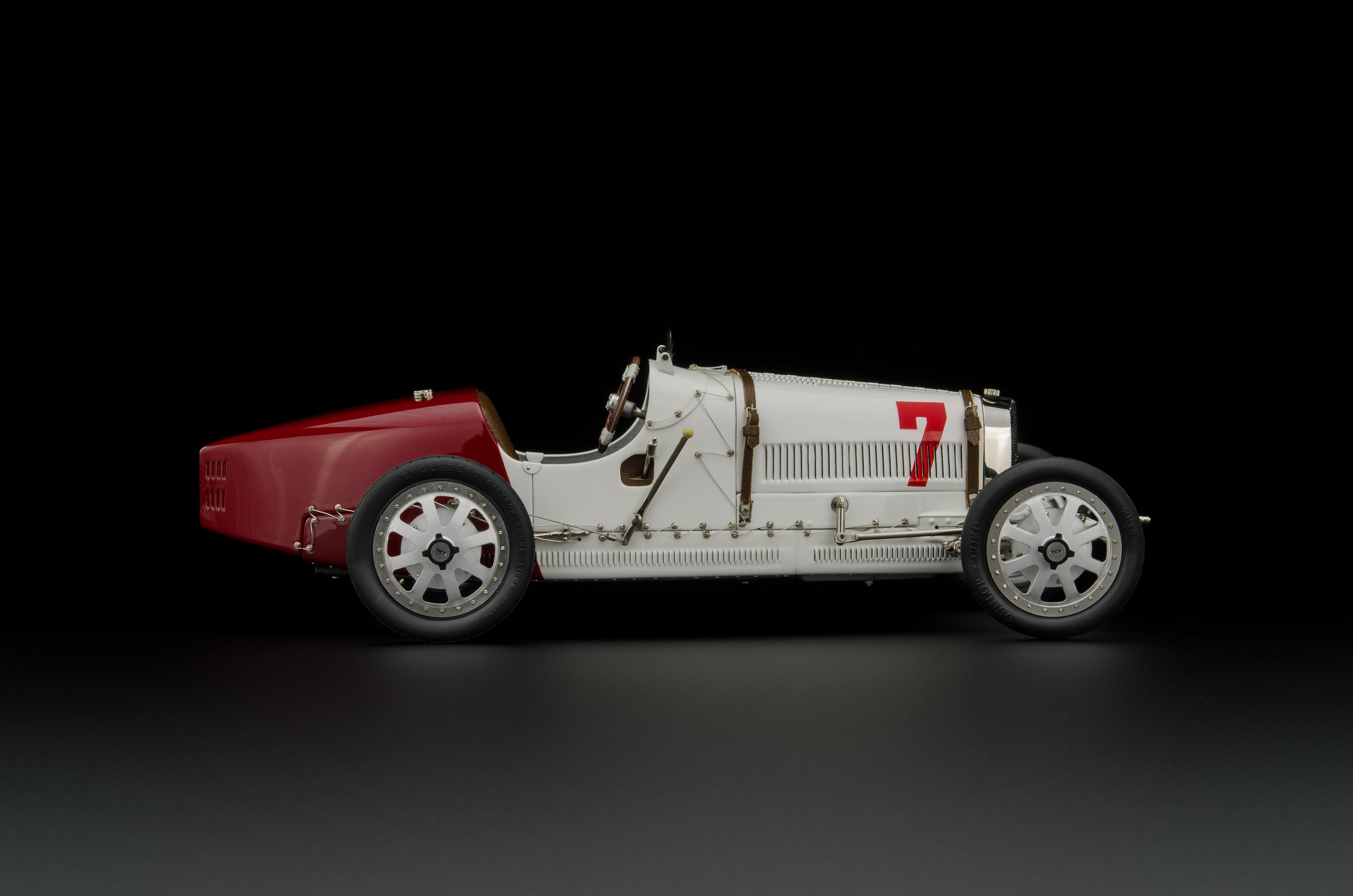
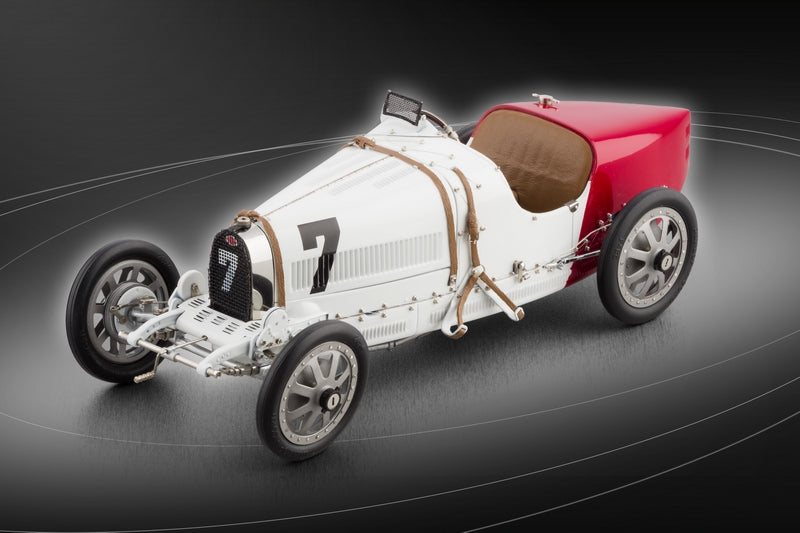
1:18 Bugatti T35 Nation Color Project - Poland #7 LE 2000 St. CMC M-100 003 -pre-owned-
Der Verkauf unterliegt der Differenzbesteuerung gem. § 25a UStG (Gebrauchtgegenstände/Sonderregelung). Ein gesonderter Ausweis der Umsatzsteuer für gebrauchte oder wiederaufbereitete Gegenstände ist nicht zulässig.

Description
France is generally considered a kind of motherland of motorsports. France hosted its first Grand Prix competition as early as 1906. This racing event ran annually until 1914 under the auspices of the Automobile Club of France (ACF).
After the end of the First World War, other countries also began hosting "Grand Prixs," with the French term "Grand Prix" gaining increasing popularity and quickly becoming accepted worldwide as a memorable synonym for the emerging international motor racing. After 1918, the Grand Prix of Italy (1921), Belgium (1925), and Germany and Great Britain (1926) followed.
These events soon attracted large crowds; the racing atmosphere was simply something new and special. And there was plenty of thrill. Even back then, the motto was "see and be seen." People dressed up for the Grand Prix. The ladies wore suits and hats, the men wore fine clothes with suits and ties. The obligatory headgear, either a hat or a sporty flat cap, was a must. Children were taken along in the fashionable sailor suits of the time.
Unfortunately, contemporary old black-and-white photos don't capture how colorful the racing cars of the 1920s and 1930s once looked. National colors were now prescribed for each country. Thus, brightly painted racing cars appeared at every Grand Prix.
We would therefore like to show you, using the example of a basic model of the Bugatti T 35 Grand Prix, which dominated the racing scene of the time, which country-specific racing color schemes were to be found on the race tracks.
Note: The appearance of the model, as well as the lettering design (starting numbers), make no claim to historical authenticity and cannot be attributed to any specific racing application or driver personality. M-100-xxx CMC Bugatti Type 35 / Nations Project
Technical data of the original vehicle
Eight-cylinder in-line engine (twin block), overhead camshaft
with three valves per cylinder, two Zenith horizontal carburettors
| Perfomance: | 95 hp at 6,000 rpm |
| Engine capacity: | 1,991 cc |
| Top speed: | approx. 180 km/h |
| Wheelbase: | 2,400 mm |
| Total length: | 3,700 mm |
Notice
France is generally considered a kind of motherland of motorsports. France hosted its first Grand Prix competition as early as 1906. This racing event ran annually until 1914 under the auspices of the Automobile Club of France (ACF).
After the end of the First World War, other countries also began hosting "Grand Prixs," with the French term "Grand Prix" gaining increasing popularity and quickly becoming accepted worldwide as a memorable synonym for the emerging international motor racing. After 1918, the Grand Prix of Italy (1921), Belgium (1925), and Germany and Great Britain (1926) followed.
These events soon attracted large crowds; the racing atmosphere was simply something new and special. And there was plenty of thrill. Even back then, the motto was "see and be seen." People dressed up for the Grand Prix. The ladies wore suits and hats, the men wore fine clothes with suits and ties. The obligatory headgear, either a hat or a sporty flat cap, was a must. Children were taken along in the fashionable sailor suits of the time.
Unfortunately, contemporary old black-and-white photos don't capture how colorful the racing cars of the 1920s and 1930s once looked. National colors were now prescribed for each country. Thus, brightly painted racing cars appeared at every Grand Prix.
We would therefore like to show you, using the example of a basic model of the Bugatti T 35 Grand Prix, which dominated the racing scene of the time, which country-specific racing color schemes were to be found on the race tracks.
Note: The appearance of the model, as well as the lettering design (starting numbers), make no claim to historical authenticity and cannot be attributed to any specific racing application or driver personality. M-100-xxx CMC Bugatti Type 35 / Nations Project
Technical data of the original vehicle
Eight-cylinder in-line engine (twin block), overhead camshaft
with three valves per cylinder, two Zenith horizontal carburettors
| Perfomance: | 95 hp at 6,000 rpm |
| Engine capacity: | 1,991 cc |
| Top speed: | approx. 180 km/h |
| Wheelbase: | 2,400 mm |
| Total length: | 3,700 mm |




